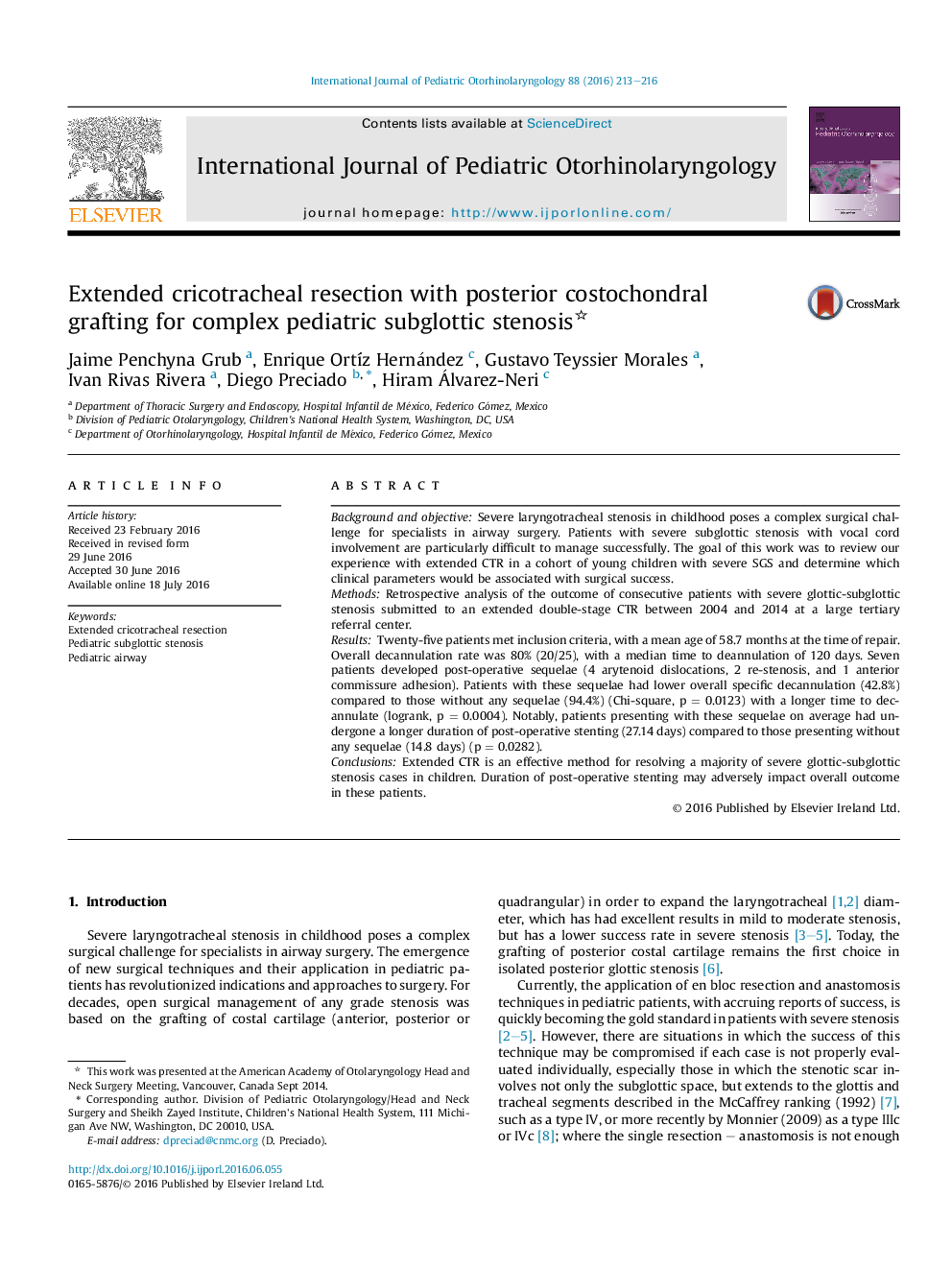| Article ID | Journal | Published Year | Pages | File Type |
|---|---|---|---|---|
| 4111415 | International Journal of Pediatric Otorhinolaryngology | 2016 | 4 Pages |
Background and objectiveSevere laryngotracheal stenosis in childhood poses a complex surgical challenge for specialists in airway surgery. Patients with severe subglottic stenosis with vocal cord involvement are particularly difficult to manage successfully. The goal of this work was to review our experience with extended CTR in a cohort of young children with severe SGS and determine which clinical parameters would be associated with surgical success.MethodsRetrospective analysis of the outcome of consecutive patients with severe glottic-subglottic stenosis submitted to an extended double-stage CTR between 2004 and 2014 at a large tertiary referral center.ResultsTwenty-five patients met inclusion criteria, with a mean age of 58.7 months at the time of repair. Overall decannulation rate was 80% (20/25), with a median time to deannulation of 120 days. Seven patients developed post-operative sequelae (4 arytenoid dislocations, 2 re-stenosis, and 1 anterior commissure adhesion). Patients with these sequelae had lower overall specific decannulation (42.8%) compared to those without any sequelae (94.4%) (Chi-square, p = 0.0123) with a longer time to decannulate (logrank, p = 0.0004). Notably, patients presenting with these sequelae on average had undergone a longer duration of post-operative stenting (27.14 days) compared to those presenting without any sequelae (14.8 days) (p = 0.0282).ConclusionsExtended CTR is an effective method for resolving a majority of severe glottic-subglottic stenosis cases in children. Duration of post-operative stenting may adversely impact overall outcome in these patients.
